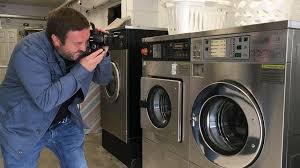Keeping a shared laundry room efficient, clean, and safe can make or break tenant satisfaction—especially in apartments and social housing environments. But for property managers and community housing operators, the bigger challenge isn’t just maintenance. It’s setup costs, operations, and managing use fairly across tenants. The good news? There’s a smarter way to approach this with zero upfront investment.
Let’s break down how modern Laundry Room Management strategies can reduce costs, increase reliability, and serve everyone—without sacrificing cleanliness or convenience.
Why Laundry Room Management Matters More Than Ever
Gone are the days when laundry rooms were tucked away, unmonitored, and barely functional. In high-density living, shared amenities like laundry rooms directly impact the tenant experience. Delays, broken machines, and unclear rules quickly cause tension among residents.
Laundry Room Management is no longer about a few laminated rules on the wall. It’s about:
- Streamlining machine access with smart scheduling
- Minimising utility wastage with energy-efficient machines
- Ensuring maintenance response times are fast and reliable
- Keeping shared spaces hygienic and secure
In community or social housing contexts—where budgets are tighter and residents may have varied mobility needs—getting this right is even more critical.
Smarter Installations: Zero Capital, Full Support
What if we told you there’s a model where operators handle the full setup at no cost?
Laundry Room Management companies now offer full machine installation and servicing agreements for zero capital outlay. That means:
- Free installation of commercial-grade washers and dryers
- No upfront investment from building owners
- Ongoing maintenance and servicing included
- Revenue-sharing or fixed rental options to suit various ownership models
For social housing, this is a game-changer. Machines are upgraded every few years, ensuring compliance with safety and environmental standards—without straining government or housing co-op budgets.
Common Challenges in Shared Laundry Facilities (And Simple Fixes)
Let’s face it: laundry rooms don’t always run smoothly. But with clear systems and updated tech, most issues can be avoided:
1. Overcrowding & Booking Conflicts
Residents fighting over machines? Digital booking apps now allow tenants to reserve washers and dryers in advance. No more passive-aggressive sticky notes.
2. Unreported Breakdowns
When something breaks, tenants often don’t know who to tell. Smart machines can send real-time maintenance alerts to the operator, getting the issue fixed before it causes complaints.
3. Excessive Energy Use
Older machines often waste water and power. Newer commercial models are 4–5 times more efficient, reducing strain on building infrastructure—and slashing utility bills.
4. Lack of Hygiene
In shared housing, laundry hygiene is crucial. Proper Laundry Room Management includes routine sanitisation of machines and the facility itself—critical in preventing cross-contamination, especially in aged or disability housing.
Case Study: How One Melbourne Operator Modernised Their Laundry Room for Free
In a 40-unit social housing complex in Melbourne’s west, management struggled for years with broken coin-op machines and weekly tenant complaints. When they partnered with a specialist in Laundry Room Management, the following changes were made:
- Machines replaced at zero cost
- PayWave and app-based payments introduced
- Usage tracked in real time to avoid overloading
- Cleaning contract added to maintain hygiene weekly
Six months later, complaints were down by 85%. Building managers reported “a noticeable drop in tenant frustration.” Energy bills also dropped by 12%, thanks to upgraded units.
You can read more about energy-efficient appliances and their impact on residential facilities from this industry review.
Laundry Room Management for Social Impact
Laundry access shouldn’t be a luxury. In social and community housing, it’s essential to offer services that promote dignity, independence, and routine.
By outsourcing Laundry Room Management to a professional provider, housing coordinators:
- Save on infrastructure and admin costs
- Provide consistent service access
- Improve resident satisfaction and retention
- Meet government cleanliness and accessibility standards with ease
And best of all, the service scales with demand—meaning it can grow as buildings expand or tenants’ needs shift.
What to Look for in a Laundry Room Partner
Not all laundry service providers are created equal. When selecting a Laundry Room Management partner, ensure they offer:
- Transparent fee or revenue-sharing structures
- Full installation with no hidden costs
- Fast-response maintenance
- App-based booking or payment systems
- Support for compliance with housing and safety regulations
Avoid providers that offer old coin-op tech or pass on hefty upgrade fees. The right partner will keep your laundry room running without placing extra burden on your tenants or your team.
Final Thoughts
A functional, hygienic, and efficient laundry room can quietly improve daily life for dozens—or even hundreds—of residents. Thanks to zero-cost installation models and modern smart tech, there’s no longer an excuse for ageing, broken machines or chaotic laundry spaces.
Whether you manage a private apartment complex or a publicly funded housing estate, exploring a hands-off Laundry Room Management solution could be the smartest move you make this year.
Looking to modernise your building’s laundry facilities without the upfront spend? Start by exploring who’s already doing it right.

